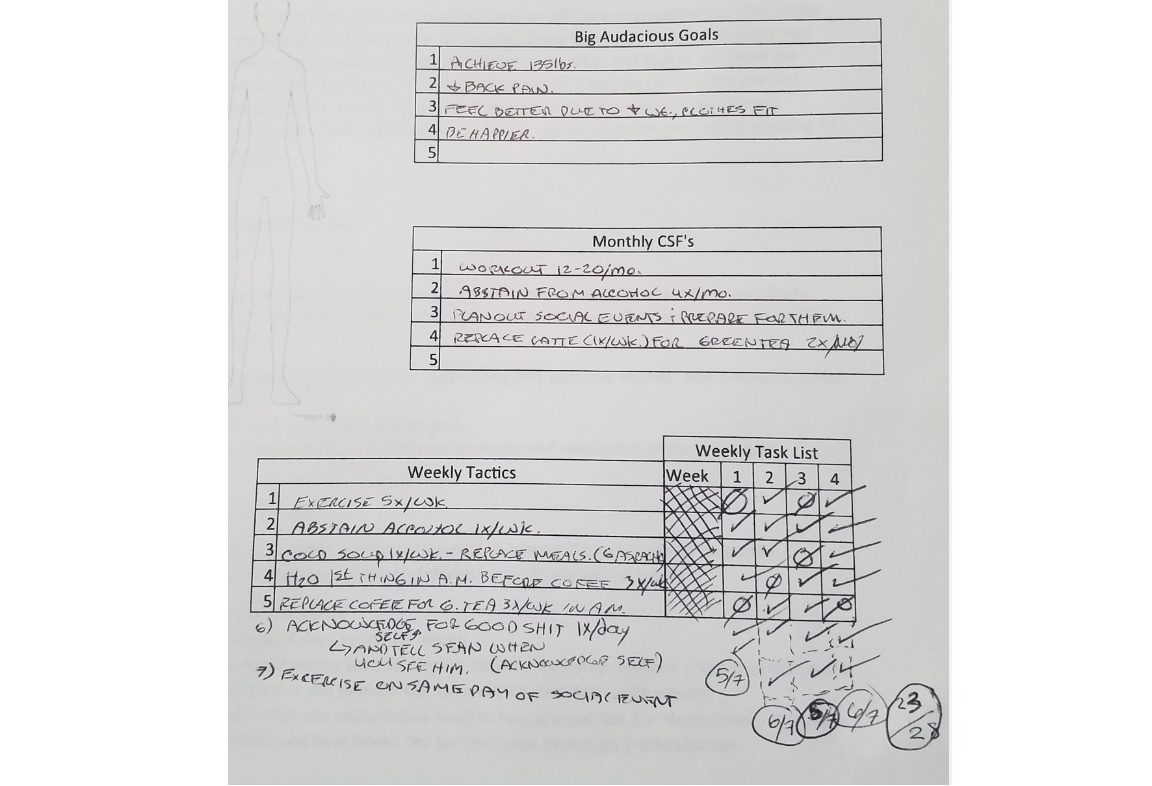Do you ever find yourself stressed out, stuck in a rut, or just too busy that you don’t know what to do next?
Sometimes stress puts us in a confined state of mind in which we feel like we have nowhere to go and we stay stuck in a stressful state of something like anger, depression, or spite towards someone else. We can also find ourselves feeling stagnant on certain work days where we sit at our work desk for so long. States of melancholy which we get in a state of mind that basically makes us feel like we’re a shoe in a dryer and we don’t know what to do next except have our thoughts go in the same mundane circle. Similar to the way our bodies adapt to become stronger after weeks of regular exercise, part of progressing forward in life and maintaining a good quality of life is making sure that your mind is constantly percolating and striving for adaptation.
So how do we keep our mind percolating and striving for the next best thing that’s in front of us? One technique that I use is a little bit of meditation that I learned in a psychology class in college. When being taught to be an elite performing human being in our everyday lives, we always talked about what an elite performer in an athletic event has to go through to achieve their task.
Something that is commonly taught to athletes before they execute an event is to take deep breaths.
Taking deep breaths will slow down the heart rate a few beats and decrease the amount of stress hormones that are telling the heart to beat so fast. There is a physiological correlation to taking deep breaths and triggering the body and it’s nervous system how to relax.
For instance, Marksmanship performers who participate in biathlons, a sport in which an athlete will ski downhill and then aim for a target and shoot at a long distance target with a rifle. The challenge of this is performing a complicated task of downhill skiing and immediately aiming and shooting at a target that is very long distance away while their heart is racing and stress hormones are making the body over stimulated. Baseball athletes will are also taught to take a few deep breaths before going up to bat. Taking deep breaths helps these athletes to become a better performer because they can focus on the task at hand that takes a high amount of dexterity, like aiming for a target or hitting a small baseball that’s being thrown at you very hard from a pitcher.
Even though most days at work and life in the general population does not involve the above mentioned extent of physically athletic activity, stress can hit us the same way just as it does an athlete performing an athletic activity correctly. For example, if someone were to have a bad day at work and get reprimanded by their boss because they didn’t do something the right way, their mood could be affected in a negative way in which the individual may not want to exercise, eat healthy or go to sleep in a timely manner because they are over stressed. The stimulus of getting yelled at by the boss will increase the amount of stress hormones, blood pressure, and heart rate responses to an individual. This stress stimulus is very similar to what we have talked about with athletes and their activities they want to execute correctly. the solution to this type of stress response is identical to how an athlete will center themselves. By taking deep breaths, one can apply similar heart rate recovery, concentration, and an overall decrease in the amount of stress hormones being produced. This is a method in which we can become Elite performers and adhere to a healthier lifestyle.
So when stress from everyday life gets in the way and keeps us from adhering to Life Time Fitness, try taking a few deep breaths. This is one technique that I was taught by one of my favorite psychology teachers in my college career:
- Find an inanimate object outside (like a tree, the horizon or some clouds)
- Look at that object… then close your eyes. Take one long, deep breath. Feel your longs all the way to it’s fullest capactity and take your time.
- Let that breath out.
- With your eyes closed, take another long and steady deep breath. On the exhale, open your eyes and slowly let out your breath.
- Take One more deep breath with your eyes open, still looking at the object you initially picked out. Exhale one more time and think about something that makes you happy (I think about my son, my friends, my family… and burritos!)
Feel free to try this technique when things get rough. Not only will taking deep breaths bring in a better state of focus when in the middle of an athletic event, but this technique can help reduce stress in our everyday lives! This is a technique we teach to some of our Personal Training clients in the Napa Valley because there are so many beautiful things to look at here … Trees… Vineyards… Hills. Sounds like some great things to look at and take it all in, right?
So take some time out of the stressful part of your day and look at something pretty.
It will be alright, if we just take deep breaths.




